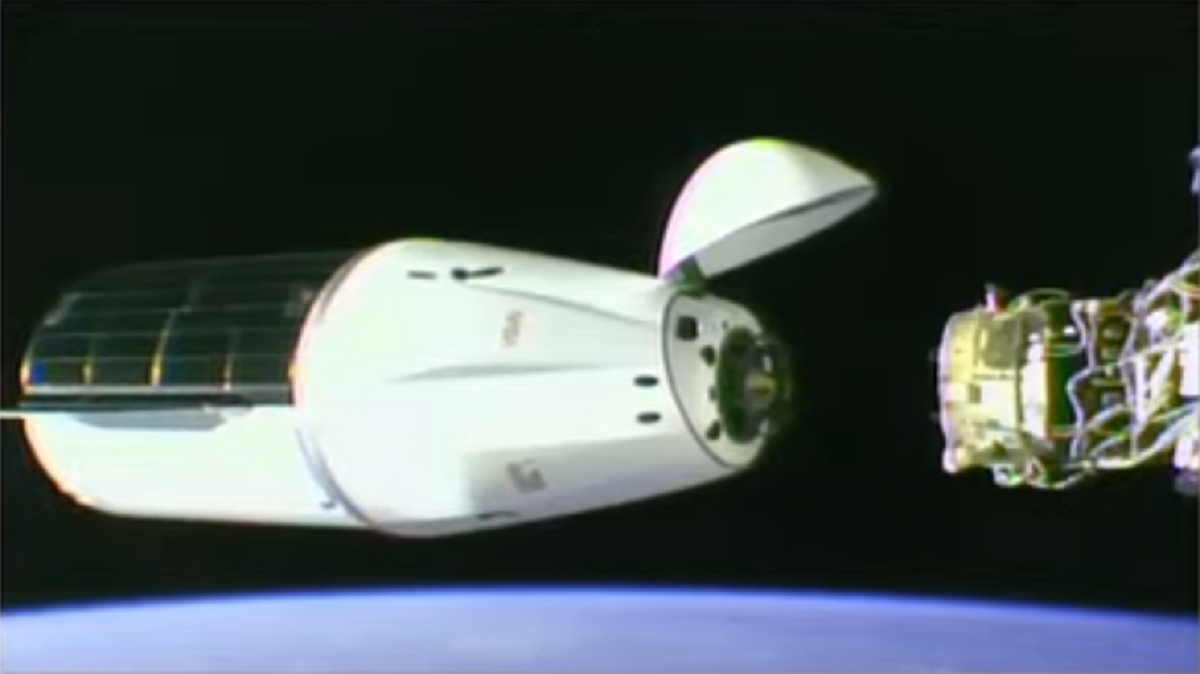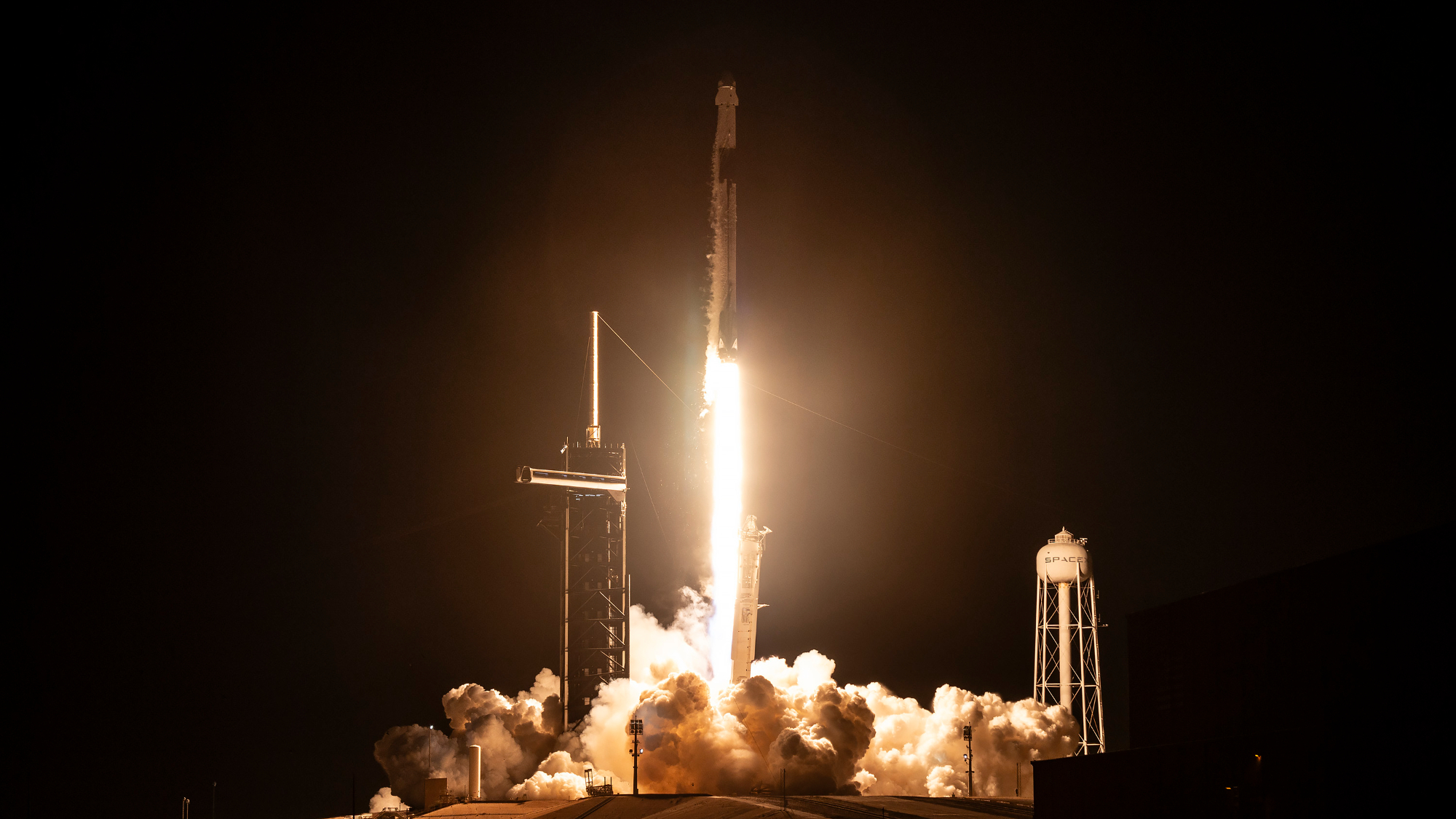A SpaceX Dragon cargo capsule arrived at the International Space Station early Saturday (Nov. 11) carrying tons of fresh supplies for the orbiting lab's astronaut crew.
SpaceX launched the robotic Dragon resupply ship atop a Falcon 9 rocket from Kennedy Space Center in Florida on Thursday evening (Nov. 9), kicking off the company's CRS-29 cargo mission for NASA.
The Dragon docked with the International Space Station (ISS) on Saturday at 5:07 a.m. EST (1007 GMT), about 14 minutes earlier than scheduled.
Related: SpaceX launches its 29th cargo mission to the International Space Station

Dragon is carrying more than 6,500 pounds (2,950 kilograms) of supplies and scientific hardware on CRS-29, which is the 29th cargo mission SpaceX has flown to the ISS for NASA. (CRS stands for "Commercial Resupply Services.")
Among the scientific gear is a NASA experiment called AWE, or "Atmospheric Waves Experiment," which will study gravity waves in Earth's atmosphere.
Also going up with the parcel is the agency's ILLUMA-T project (short for "Integrated Laser Communications Relay Demonstration Low Earth Orbit User Modem and Amplifier Terminal"). ILLUMA-T will test high-speed laser communications in orbit, exchanging signals with the Laser Communications Relay Demonstration, an instrument that launched aboard a U.S. military satellite in December 2021.
Get the Space.com Newsletter
Breaking space news, the latest updates on rocket launches, skywatching events and more!
And beyond the science, Dragon is also hauling up some holiday treats for the ISS astronauts on this flight, including pumpkin spice cappuccinos, turkey and cranberry sauce, NASA officials said.

Dragon will spend about a month at the ISS, if all goes according to plan. The craft will then come back to Earth with 3,800 pounds (1,724 kg) of cargo loaded on by the ISS astronauts, NASA officials said.
No other space station cargo craft has this return capability. The other two operational freighters — Northop Grumman's Cygnus craft and Russia's Progress vehicle — are disposable. At the end of their missions, they burn up in Earth's atmosphere.
Editor's note: This story was updated at 11 am E.T. on Nov. 11, 2023 to reflect the successful docking of SpaceX's Dragon CRS-29 spacecraft at the International Space Station.
Join our Space Forums to keep talking space on the latest missions, night sky and more! And if you have a news tip, correction or comment, let us know at: community@space.com.

Michael Wall is a Senior Space Writer with Space.com and joined the team in 2010. He primarily covers exoplanets, spaceflight and military space, but has been known to dabble in the space art beat. His book about the search for alien life, "Out There," was published on Nov. 13, 2018. Before becoming a science writer, Michael worked as a herpetologist and wildlife biologist. He has a Ph.D. in evolutionary biology from the University of Sydney, Australia, a bachelor's degree from the University of Arizona, and a graduate certificate in science writing from the University of California, Santa Cruz. To find out what his latest project is, you can follow Michael on Twitter.









